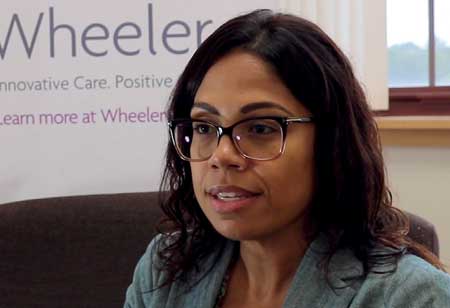Thank you for Subscribing to Healthcare Business Review Weekly Brief

The Role of Patient Demographic Data in Health Equity
Healthcare Business Review
As we know, the COVID-19 pandemic finally exposed health inequities in the U.S. into the mainstream. These preventable inequities have a financial toll on our healthcare system. These inequities can be mitigated with the foundation of an effective health equity strategy. Such a strategy depends on an organization’s capacity to collect accurate patient data, including race, ethnicity, and language (REAL). In today’s value-based care environment, organizations are accountable for improving health outcomes and lowering costs. To achieve these goals, organizations need to better know and understand their patients. The evidence clearly points to the significant role of demographic variables, such as race and language, in shaping the quality of care experienced by patients/clients. With equity now universally recognized as a pillar of quality, providing excellent care cannot be achieved without integrating an equity component.
Healthcare organizations must embark on a journey of using data to show a path to achieving greater equity. Disaggregating quality measures by factors such as race/ethnicity, socioeconomic status, and dual insurance status of having Medicare and Medicaid at the same time can provide valuable information to tailor equity interventions and programs. In order to address health equity, policymakers, researchers, scientists, and healthcare organizations must accurately collect patient data, using culturally appropriate methods and stratify data findings to reveal a more accurate assessment of the current state and where necessary interventions can be made to mitigate health disparities and generate positive outcomes.
The goal of the National CLAS Standards is to advance health equity, improve quality, and help eliminate healthcare disparities by establishing a blueprint for health and healthcare organizations. An organization’s Health Equity Plan goal for data collection should be directly linked to CLAS Standard #11: Culturally and Linguistically Appropriate Services: Engagement, Continuous Improvement, and Accountability.The collection and maintenance of accurate and reliable demographic data are necessary to monitor and evaluate the impact of CLAS on health equity and outcomes and to inform service delivery. Demographic data provides an organization with information about those served, including race, ethnicity, gender identity, sexual orientation, and preferred language.
For data to be accurate and reliable, it needs to be complete. Complete data promotes an understanding of the unique characteristics of those served and improves the ability to achieve health equity for vulnerable populations. Addressing data collection gaps is integral to ensuring all patients are provided with culturally and linguistically competent care. Missing fields in medical records inhibit the ability of service providers to be aware of unique individual factors in patients. More complete data is more actionable data.
For data to be accurate and reliable, it needs to be complete. Complete data promotes an understanding of the unique characteristics of those served and improves the ability to achieve health equity for vulnerable populations
With more complete and actionable data, organizations can identify gaps in outcomes of care by measuring and establishing a baseline and assessing forward progress. More complete patient demographic data will assist in identifying opportunities to expand services. Additionally, organizations can better recruit, retain, and professionally develop the necessary workforce to match and meet the needs of its population. Organizations must create structures and processes for patients to self-report race and ethnicity, the gold standard in patient demographic data. In addition to REAL data, patient demographic data should sexual orientation and gender, as recommended by CLAS.
An organization must prioritize the collection and use of complete and accurate patient data to improve health equity. Strengths of an organization to undergo this journey include an unwavering commitment to health equity reinforced with appropriate resources and funding, a robust quality improvement model, integration with information technology, strong leadership, and a dedicated workforce. Opportunities for further strengthening the collection and use of patient data to improve health equity include enhanced staff training on the importance of data collection and how to use data, increasing data transparency internally and externally, and the sharing of successes and lessons learned in patient data collection and its impact on improving health equity.









